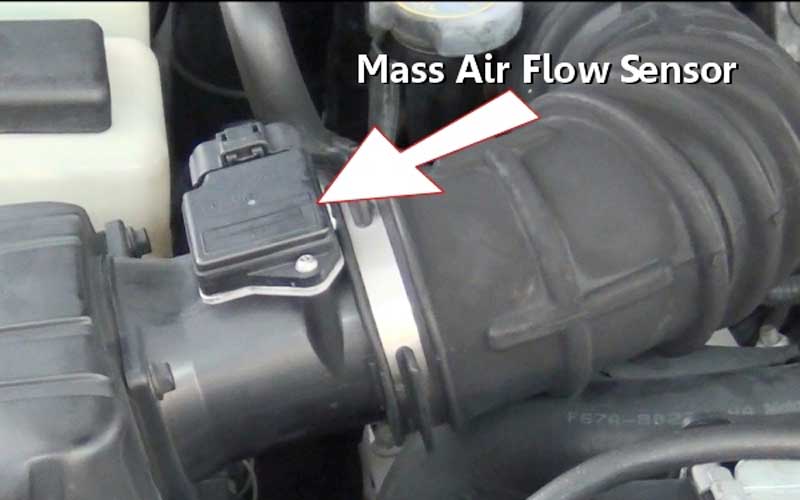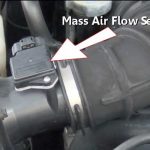A mass airflow sensor (MAF for short) sits in the vehicle’s air intake and measures the mass of the air flowing into the engine. There are two different types of this sensor, one a “hot wire” sensor, the other a “vane-meter” sensor. But those are just two different strategies of arriving at the same information, which is the amount of air entering the engine. An air temperature sensor is also incorporated into the MAF sensor. Knowing the mass and the temperature of the air coming in allows the PCM to calculate the amount of fuel necessary for a correct mixture.
After the fuel mixture is calculated using MAF sensor data and combustion occurs, the O2 sensor on the exhaust side double-checks the results, and the mixture is fine-tuned based on that. The two primary parts of a modern engine management system as far as efficient running is the MAF sensor and the O2 sensors. Unless it should be added, a different system entirely is used; some engine management systems (a minority) rely on a manifold pressure sensor and throttle position data rather than a MAF sensor to calculate airflow and determine fuel mixture.
The MAF sensor is located between the air filter box and the throttle body. It is usually fastened into the intake tube with a screw or two and is easily accessed and replaced. Most of the time a MAF sensor failure will be accompanied by a check engine light. This can indicate that the MAF sensor output signal is out of range, or that a fault is detected in the MAF circuit, or that the engine is running too lean. In almost all cases an hour of diagnostic charges is asked for to be certain of the remedy, and it’s not uncommon for an attempt to clean the sensor to be included in that charge.
Cost of Mass Airflow Sensor Replacement
On average for most vehicles, it costs about $250 to replace a MAF sensor.
For some specific examples on common vehicles, using $100 an hour as a labor rate:
For a 2011 Chevrolet Cruze with a 1.8 liter engine, the labor to replace the sensor is .4 of an hour. A factory MAF sensor lists for $91, or a Bosch replacement part costs about $74. This makes the job (including diagnosis) about $231 using OE parts, or about $214 using aftermarket parts.
For a 2007 Nissan Altima with a 2.5 liter engine the labor to replace the MAF sensor is .3 of an hour. A factory sensor lists for $309, or a Hitachi replacement part costs about $70. This makes the job, including diagnosis, about $439 using OE parts, or about $200 using aftermarket parts.
For a 2010 Ford Escape with a 3.0 liter engine, the labor time to replace the MAF sensor is .4 of an hour. A factory sensor lists for $285, or a Standard replacement part costs about $65. With diagnostic charges, this makes the job about $425 using OE parts, or about $205 using aftermarket parts.
What Goes Wrong with MAF Sensors

The main common problem is dust or oil or any kind of contamination fouls the MAF sensor element. If the element is blocked at all it won’t register the correct amount of air, almost always underestimating, and the engine will run lean. Signs of that are low power, poor mileage, white deposits on the spark plugs, and exhaust valves. Or an engine light on and a “lean mixture” warning.
There are cleaners that are made specifically for the delicate MAF sensors, which are worth a try and often work to improve things. But in some cases, the element itself or the electronics in the sensor can be at fault, or the contamination can’t be cleared and the sensor needs to be replaced.
Another problem that happens sometimes in winter is that a vehicle that gets into too much water can suck water into the intake and foul the MAF sensor, leading to poor running. Water in the intake can also damage the sensor, though most of the time it can be dried. It’s also worth noting that trying to clean a MAF sensor with something other than a sensor-specific cleaner can damage the electronics.
FAQ
Usually just a few minutes, though the diagnosis is typically an hour of work.
The most common failure is from a fouled sensor, which causes the engine to run lean, signs of which include low power, poor mileage, and sometimes an engine warning light.
Yes, it’s usually simple enough. Knowing whether it needs to be replaced is more difficult, and usually not possible without some diagnostic work.

